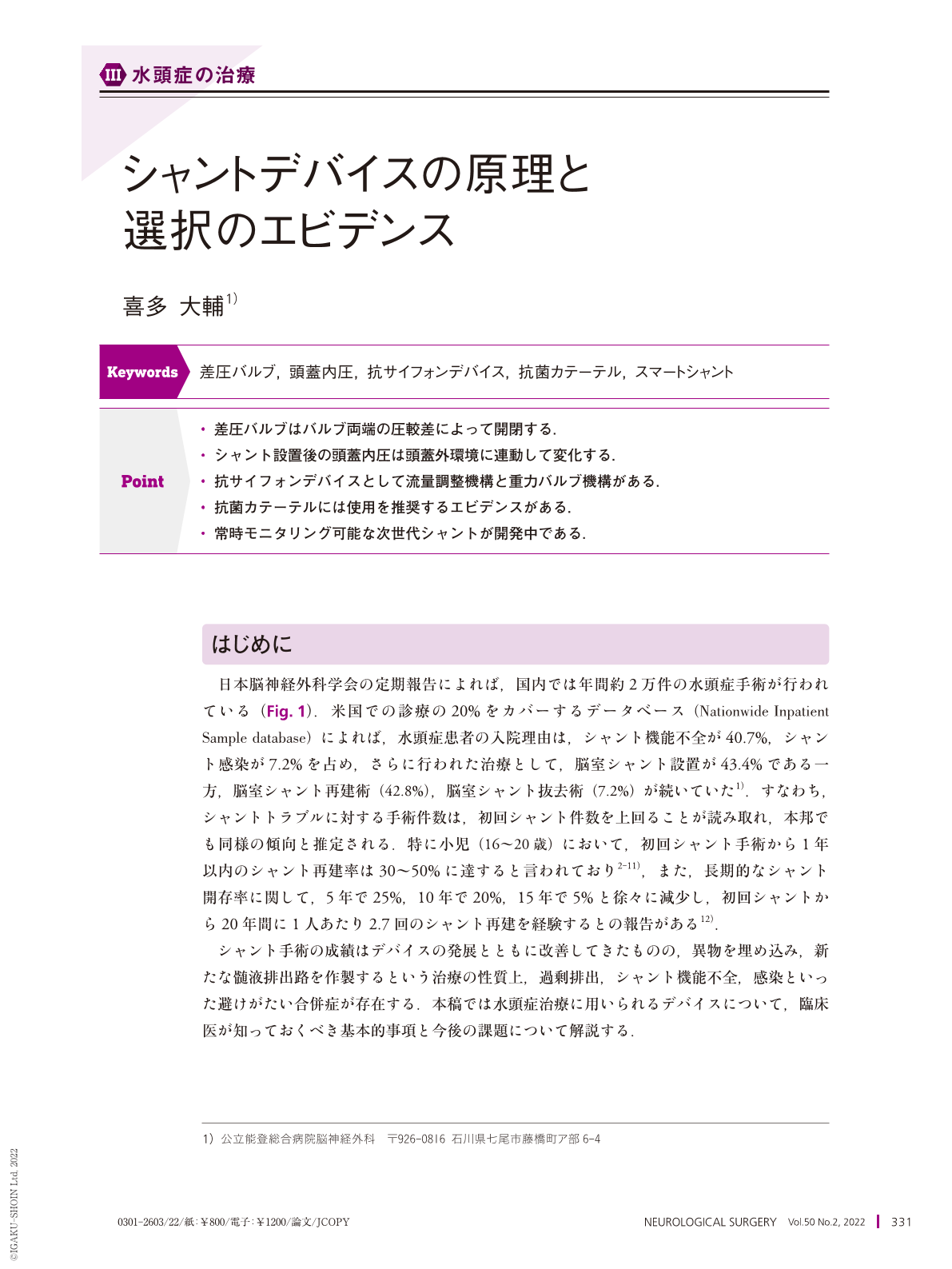Japanese
English
特集 水頭症—脳脊髄液動態への理解と治療に迫る
Ⅲ水頭症の治療
シャントデバイスの原理と選択のエビデンス
Basic Knowledge and Current Evidence on Cerebrospinal Shunt Devices
喜多 大輔
1
Daisuke KITA
1
1公立能登総合病院脳神経外科
1Department of Neurosurgery, Noto General Hospital
キーワード:
差圧バルブ
,
頭蓋内圧
,
抗サイフォンデバイス
,
抗菌カテーテル
,
スマートシャント
,
differential pressure valves
,
intracranial pressure
,
antisiphon devices
,
antibacterial catheters
,
smart shunt
Keyword:
差圧バルブ
,
頭蓋内圧
,
抗サイフォンデバイス
,
抗菌カテーテル
,
スマートシャント
,
differential pressure valves
,
intracranial pressure
,
antisiphon devices
,
antibacterial catheters
,
smart shunt
pp.331-347
発行日 2022年3月10日
Published Date 2022/3/10
DOI https://doi.org/10.11477/mf.1436204561
- 有料閲覧
- Abstract 文献概要
- 1ページ目 Look Inside
- 参考文献 Reference
Point
・差圧バルブはバルブ両端の圧較差によって開閉する.
・シャント設置後の頭蓋内圧は頭蓋外環境に連動して変化する.
・抗サイフォンデバイスとして流量調整機構と重力バルブ機構がある.
・抗菌カテーテルには使用を推奨するエビデンスがある.
・常時モニタリング可能な次世代シャントが開発中である.
Revision surgeries after cerebrospinal shunt placement are sometimes unavoidable mainly because of the mechanical limitations of current shunt devices despite their technological improvements. This article discusses evidence on existing shunt devices, basic knowledge on their structure and function, and possible future issues.

Copyright © 2022, Igaku-Shoin Ltd. All rights reserved.


